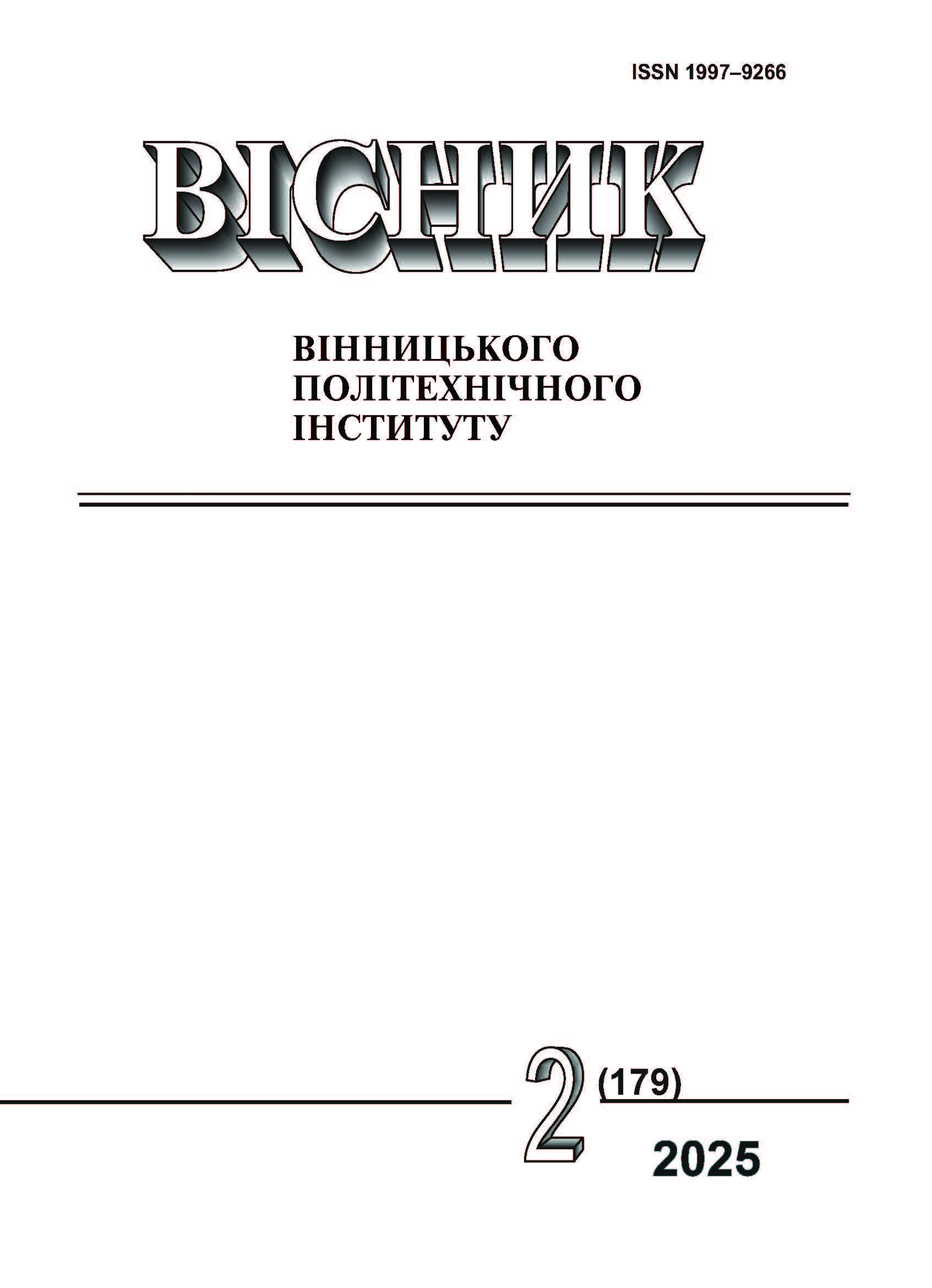Analysis of the Efficiency of Modern Denitrification Technologies for Flue Gases from Coal-Fired Boilers. Analysis of Problems and Prospects
DOI:
https://doi.org/10.31649/1997-9266-2025-179-2-39-44Keywords:
coal boiler, flue gases, technology, denitrification, efficiency, systematizationAbstract
With the continuous development of economy and society, global energy consumption continues to grow, and the corresponding environmental problems are becoming more and more obvious, and a large number of harmful emissions of flue gases from boiler plants, such as nitrogen oxides, sulfur oxides, carbon oxides, have led to the problem of global deterioration of the ecological state of the environment, negative changes in atmospheric air quality indicators, the formation of acid rain, etc. During the operation period of coal-fired heating boilers, the urgent environmental problem of neutralizing a significant amount of nitrogen oxides NOX formed in the process of generating thermal energy during combustion needs to be solved. The article analyzes effective technologies for cleaning flue gases of coal-fired boilers from nitrogen and sulfur oxides: selective catalytic reduction (SCR), selective non-catalytic reduction (SNCR), adsorption denitrification with activated carbon and plasma method. In the process of research, main characteristics of these technologies, requirements for implementation, areas of practical application, levels of efficiency were systematized and a comparative analysis was conducted according to the following criteria: provided denitrification rate, principle of operation, advantages and disadvantages, the degree of use. The effectiveness, features of application and practical attractiveness of various means of denitrification of flue gases of coal-fired boilers were studied and systematized in order to create the information base of modern environmental methods and technologies for neutralizing the harmful effects of combustion products of solid fuels of power generating plants on the environment. The research found that the existing high-efficiency SCR and SNCR technologies will be widely used in flue gas denitrification technology in the future, and the integration technologies of desulfurization and denitrification, such as adsorption method and plasma method, will be actively developed to explore flue gas purification technologies suitable for the application of local production characteristics.
References
Хуан Цзіжун, і Чжун Чао, «Дослідження технології денітрифікації димових газів вугільного котла,». Щоб очистити світ, № 39 (4), с. 4-6, 2023.
Ши Цзяньюн, Аналіз витрат і переваг технологій десульфурації та денітрифікації димових газів для вугільних електростанцій. Ханчжоу: Чжецзянський університет, 2015.
CAO Jun, FU Min, ZHOU Lin та ін. «Прогрес дослідження отруєння прискорювачами денітрації SCR,» Хімічна інженерія застосування, № 47 (2), с. 380-385, 2018.
Сяо X, Xiong S, Shi Y, та ін. “Вплив H2O і SO2 на селективне каталітичне відновлення NO за допомогою NH3 на каталізаторі Ce/TiO2. Механізм і кінетичне дослідження,” Journal of Physical Chemistry C, no. 120 (2), pp. 1066-1076, 2016.
J. Ye, X. Wang, Z. Xing, та ін. «Приготування та характеристика каталізаторів CeO2 -MoO3 /TiO2 для селективного каталітичного відновлення NO за допомогою NH3,» Дослідження аерозолів і якості повітря,№ 17, с. 2726-273, 2017.
Чжа К, Цай С, Ху Х та ін. «In situ DRIFT дослідження стимулюючого впливу вольфраму на каталізатори MNOx-CeO2/meso-TiO2 для зменшення викидів NOx ,» Journal of Physical Chemistry C, № 121 (45), с. 25243-25254, 2017.
Цзінь Кю, Шень І, і Чжу С. «Модифікований оксид празеодиму CeO2/Al2O3 каталізатор для селективного каталітичного відновлення NO NH3,» Китайський хімічний журнал, № 34 (12), с. 1283-1290, 2016.
WU Weihong, WU Hua, LUO Jia та ін., «Прогрес досліджень регенерації прискорювачів денітрифікації димових газів SCR,» Прикладна хімічна інженерія, № 42 (7), с. 1304-1307, 2013.
Сунь Цзін, і Сюй Чжен, «Застосування активованого вугільного матеріалу в десульфуризації та денітрифікації димових газів на теплових електростанціях,» Електроенергетика. Охорона навколишнього середовища, № 2 (1), с. 5-7, 2008.
Л. І. Тунчуань, «Дослідження десульфурації та денітрифікації активованого вугілля,» Нові вуглецеві матеріали, № 20 (2, с. 178-182, 2005.
Yao Gang, Huang Guangyu, «Прогрес дослідження активованого вугілля для денітрифікації димових газів,» Журнал хімічної інженерії, № 28 (8), с. 42-46, 2014.
Luo Shuanglong, «Дослідження переваг і недоліків і розробки комбінованого процесу десульфурації та денітрифікації активованого вугілля,» PetroChina та стандарти та якість хімічної промисловості, № 37 (24), с. 164-165, 2017.
Liu Zhi-hua, Xie Zhao-wei, Luo Yan та ін., «Дослідження переваг і недоліків і розробки комбінованого процесу десульфурації та денітрифікації активованим вугіллям,» Технологія та дизайн архітектурної інженерії, № (33), с. 4713, 2018.
К. Гарлік, Е. Суддя, і Харальд Юнтген, «Застосування активного коксу в процесах видалення SO2- і NOx, з димових газів,» Паливо, № 60(9), с. 832-838, 1981.
Мен Лей, «Стан і перспективи технології плазмової денітрифікації,» Науково-технічна інформація, № 16 (3), с. 68-69, 2018.
Ван Дун, Видалення оксидів азоту діелектричним бар'єрним розрядом]. Пекін: Північно-Китайський університет електроенергетики, 2014.
Cao X Xiaoxia, Дослідження видалення NOx із димових газів плазмою діелектричного бар’єрного розряду. Jinan: Shandong University, 2016.
Zhang Xudong, Дослідження видалення NO холодними ізолятами в діелектричному бар’єрному розряді. Пекін: Університет Цінхуа, 2003.
Jin Ping, Wang Haochen, Li Lei та ін., «Стан і перспективи технології десульфурації димових газів,» Сучасна хімічна інженерія, 48 (1), с. 119-121, 2019.
Downloads
-
pdf (Українська)
Downloads: 49
Published
How to Cite
Issue
Section
License

This work is licensed under a Creative Commons Attribution 4.0 International License.
Authors who publish with this journal agree to the following terms:
- Authors retain copyright and grant the journal right of first publication.
- Authors are able to enter into separate, additional contractual arrangements for the non-exclusive distribution of the journal's published version of the work (e.g., post it to an institutional repository or publish it in a book), with an acknowledgment of its initial publication in this journal.
- Authors are permitted and encouraged to post their work online (e.g., in institutional repositories or on their website) prior to and during the submission process, as it can lead to productive exchanges, as well as earlier and greater citation of published work (See The Effect of Open Access).





